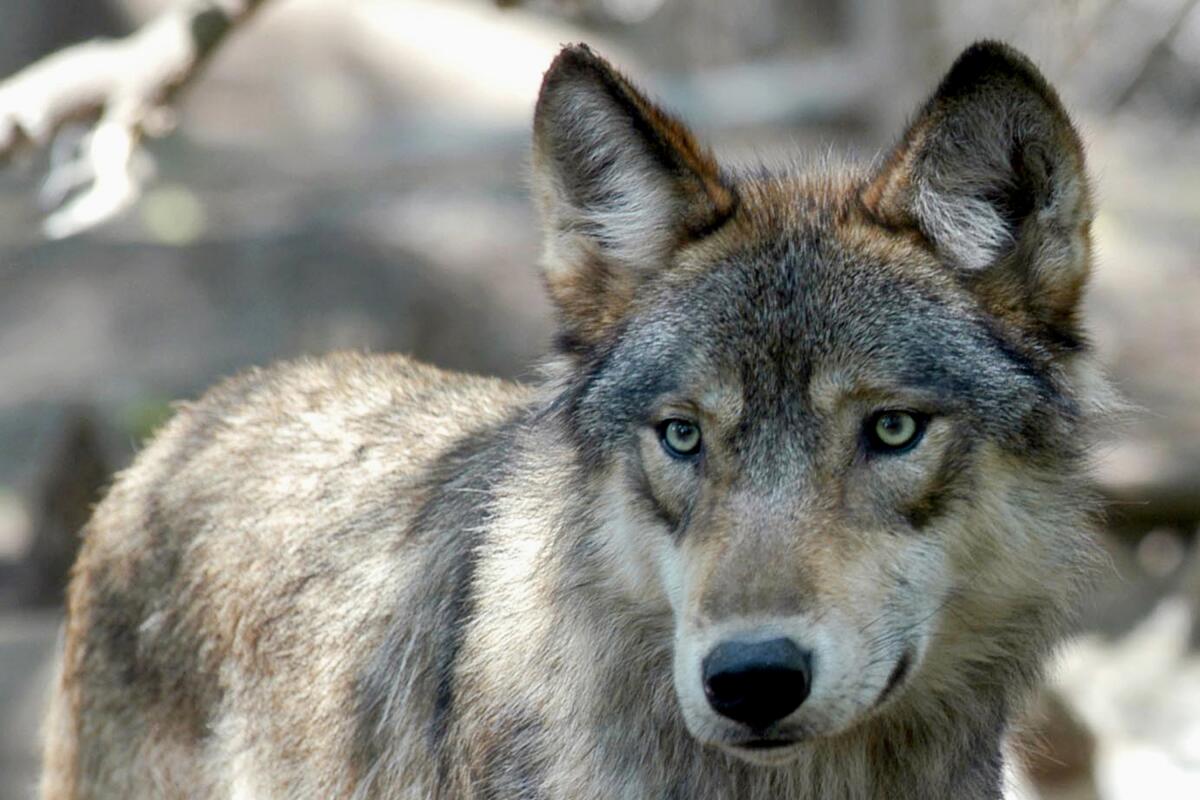Senators urge emergency protections for wolves in U.S. West

- Share via
BILLINGS, Mont. — A group of Democratic lawmakers on Thursday urged the Biden administration to enact emergency protections for gray wolves in the U.S. West in response to Republican-backed state laws that make it easier to kill the predators.
Twenty-one U.S. senators led by New Jersey’s Cory Booker and Michigan’s Gary Peters asked Interior Secretary Deb Haaland to shield wolves from being killed for 240 days while permanent protections are considered.
It’s been legal to hunt and trap wolves in the U.S. Northern Rockies for the last decade, after they rebounded from widespread extermination and federal endangered species protections were lifted.
But Republican officials in Montana and Idaho are intent on culling more wolf packs. Wolves periodically attack livestock and also prey on elk and deer herds that many hunters prize.
The U.S. Fish and Wildlife Service last month launched a year-long review to determine if protections need to be restored. The move did nothing to protect wolves in the interim, and Yellowstone National Park administrators have since complained after three wolves from a pack popular with tourists were killed after roaming into Montana.
“If continued unabated for this hunting season, these extreme wolf eradication policies will result in the deaths of hundreds of gray wolves,” the Democratic lawmakers said in a letter to Haaland. “The Department of Interior can prevent these senseless killings.”
The letter was signed by senators including from California and Nevada in the West, but not by Northern Rockies lawmakers.
Native American groups and environmentalists have previously requested an emergency listing of wolves as an endangered species.
A female mountain lion caught in the western part of the Santa Monica Mountains has been outfitted with a GPS tracking collar and dubbed P-99.
Federal officials said in response that temporary protections can’t be enacted through the legal petitions they received. However, the Endangered Species Act gives Haaland authority to do so if she determines there is a significant threat to a species.
Thirty-six wolves have been killed in Montana since the current hunting and trapping season opened last month, according to state harvest data. While it’s still early in the season, that’s not out of line with past years, said Montana Fish, Wildlife and Parks spokesman Greg Lemon.
“We’ve had years where we’ve been over that number at this point in the season, and years where we’ve been less than this,” Lemon said.
Over 320 wolves were harvested during Montana’s 2020 hunting season — significantly more than the preceding eight-year average of 242 wolves per year, according to officials. That was before Gov. Greg Gianforte signed legislation that legalized wolf killing methods previously outlawed, including snaring, baiting and night hunting.
A new law in Idaho eased wolf hunting restrictions to allow using night-vision equipment with a permit, using bait and dogs, and allowing hunting from motor vehicles.
An Idaho game official told state lawmakers earlier this month that early results from its wolf season showed no spike in killings.
To protect wolves around Yellowstone and Grand Teton National Parks, wildlife advocacy groups on Wednesday asked federal officials to impose a 5-mile buffer zone near park boundaries where wolves could not be hunted.
More to Read
Sign up for Essential California
The most important California stories and recommendations in your inbox every morning.
You may occasionally receive promotional content from the Los Angeles Times.













